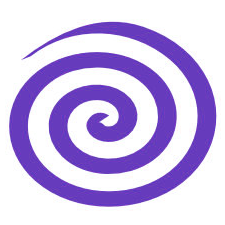Natural Trance and Psychotherapy By Eric Greenleaf, PhD.
Ericksonian hypnosis rides on naturally occurring trance states like a surfer rides a wave. Ernest Rossi MD has made a strong case for natural cycles, paralleling the nightly dream cycle, that occur every 90-120minutes. During those brainwave cycles, marked by day-dreaming or distraction in daily waking life, and sometimes marked by irritation, boredom, hunger and the like, the interpersonal invitation to trance becomes easier, and the personal drift to trance and draming becomes stronger.
Besides the cyclical unconscious waves which allow trance, there are common, situational experiences which induce states naturally which hypnotists labor to induce artificially. These states are: trauma and injury; surprise and confusion; high performance; meditation and contemplation; and; dreams and visions.
In trauma and injury, we immediately experience what hypnotists term “dissociation,”a protective state that separates our consciousness from pain and anxiety, and encourages survival. I’ve written about my protective, dissociative response to being struck, while walking, by a speeding car.
Surprise and confusion produce a different dissociative and suggestible state, employed by TV shopping channels and other sales people to throw a blizzard of
detail about price, availability, color, value and the like at the consumer, followed by the clear directive to “Call this number right now!” A natural trance state induced by surprise is seen when the lottery winner says, “I can’t believe it! This is a dream, it can’t be happening!” accompanied by a rich stew of emotions all at once. A changed state in the environment induces an immediate change in consciousness and personal expression and capacity: We are “not ourselves”.
High performance trances, rather than evidencing dissociation or depersonalization, are characterized by complete, focused attentiveness. As in traditional hypnosis, this focused, calm and powerful state enables unself-conscious performance of a highly effective kind. Athletic performance, as well as mathematical is enhanced by attention that disallows distraction from crowds shouting, or competing emotions. After shooting five three-point baskets in a row in an All Star game, Michael Jordan told an interviewer, “I guess I was just unconscious out there”. Hypnotherapists will recognize the natural effect of a focused, relaxed trance state on unselfconscious performance of complex tasks.
Meditative states and contemplative practices have long been recognized to eventuate in trance and dream states, and dreams themselves practice extraordinary actions, emotions and thoughtful observation in a safe mental theater. This natural state is invited in therapeutic and intentional trances such as the convention of finding “a safe space,” or more complex invocations of regression or progression in time.. Visions are a less common but important naturally occurring trance state, along with their more common cousin, intuition.
Freud likened the unconscious mind to “the great ocean that brought us forth; full of energy,” so our modern notion of consciousness as a surfer on that ocean makes a sort of dreamy sense. We do “lose” consciousness, sometimes dramatically and suddenly, the way a surfer loses his perch on the board. At other times we ride, entranced, in a state of high performance, or “flow”.
Invitations to trance, through formal or naturalistic means, are ways to hitch the individual unconscious forces to the surfer on the board, to, as Erickson thought, utilize the unconscious in service to the person’s own important life goals and values.
[1] Rossi, E & Nimmons, D (1991). The Twenty-Minute Break: The Ultradian Healing Response. Los Angeles: Jeremy Tarcher. NY: Zeig, Tucker, Theisen.
[1] “On the Social Nature of the Unconscious Mind: Pearson’s Brick, Wood’s Break and Greenleaf’s Blow,” in (Lankton, S.R. and Zeig, J.K., eds.), Ericksonian Monographs Number 10: Difficult Contexts for Therapy, New York: Brunner/Mazel, 1994.
